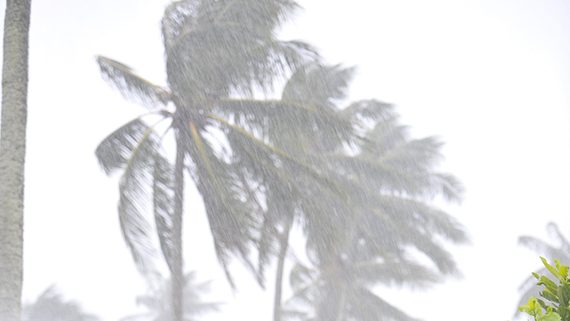Towards Paris: What does climate change mean for humanity?

"Risks can be linked to powerful weather phenomena such as floods or storms, or they can progress slowly like poorer farming conditions as a consequence of increasing drought or changes in fish species as a result of warming. Or there can be broader consequences such as increasing inequality," says Head of Group at the Finnish Meteorological Institute Heikki Tuomenvirta.
Research conducted over two decades has provided a picture of what kind of risks climate change will bring along. We know those risks will not be distributed evenly but people in a vulnerable position and communities within states will be exposed to risks more than others.
The unpredictability of the change alone is a great risk. "It is very difficult to predict the consequences if big irreversible changes, such as melting of the glaciers in Greenland and West Antarctica, take place in the climate system. The climate and societies in that world might function in ways that are very different from the systems we have today," says Heikki Tuomenvirta.
Impact on the Finnish society
"Issues that have been brought up in Finland include risks of flooding and forest damage, vulnerability of the electricity distribution, transport and telecommunications networks as well as disruptions they would cause in the availability of health and rescue services. Risks and opportunities vary by region. For example, it is possible to increase production in agriculture with suitable investments and risk management," Tuomenvirta explains.
However, Finland does not operate isolated from the rest of the world. "It is a big question how disruptions in global systems of raw material, goods and services production affect Finland," Tuomenvirta notes.
How can risks be managed?
Different adaptation measures enable local mitigation and management of risks from climate change. By adapting it is also possible to benefit from the change.
"For example better anticipation of destructive weather phenomena and risk management save human lives and reduce financial losses. Forecasting systems may in turn generate innovations and more financial activity," explains Heikki Tuomenvirta.
Adapting not enough on its own
However, the science community agrees that adapting is not enough on its own. Risks from detrimental, extensive and irreversible changes will certainly become high unless we implement measures to restrict greenhouse gas emissions.
"A climate agreement and a road map to reducing emissions binding all countries would be the most effective tool in this work," states Heikki Tuomenvirta.
Watch a video about the subject: https://youtu.be/0aptihkQ3BQ
Further information:
Head of Group Heikki Tuomenvirta, Finnish Meteorological Institute, tel. +358 29 539 4122, heikki.tuomenvirta@fmi.fi
Researched information about climate change: Climateguide.fi
The ELASTINEN project provides solutions for management of climate risks: http://ilmatieteenlaitos.fi/elastinen
The national adaptation plan for climate change (in Finnish): http://www.mmm.fi/attachments/mmm/julkaisut/julkaisusarja/2014/FJ0qKpCH7/2014
